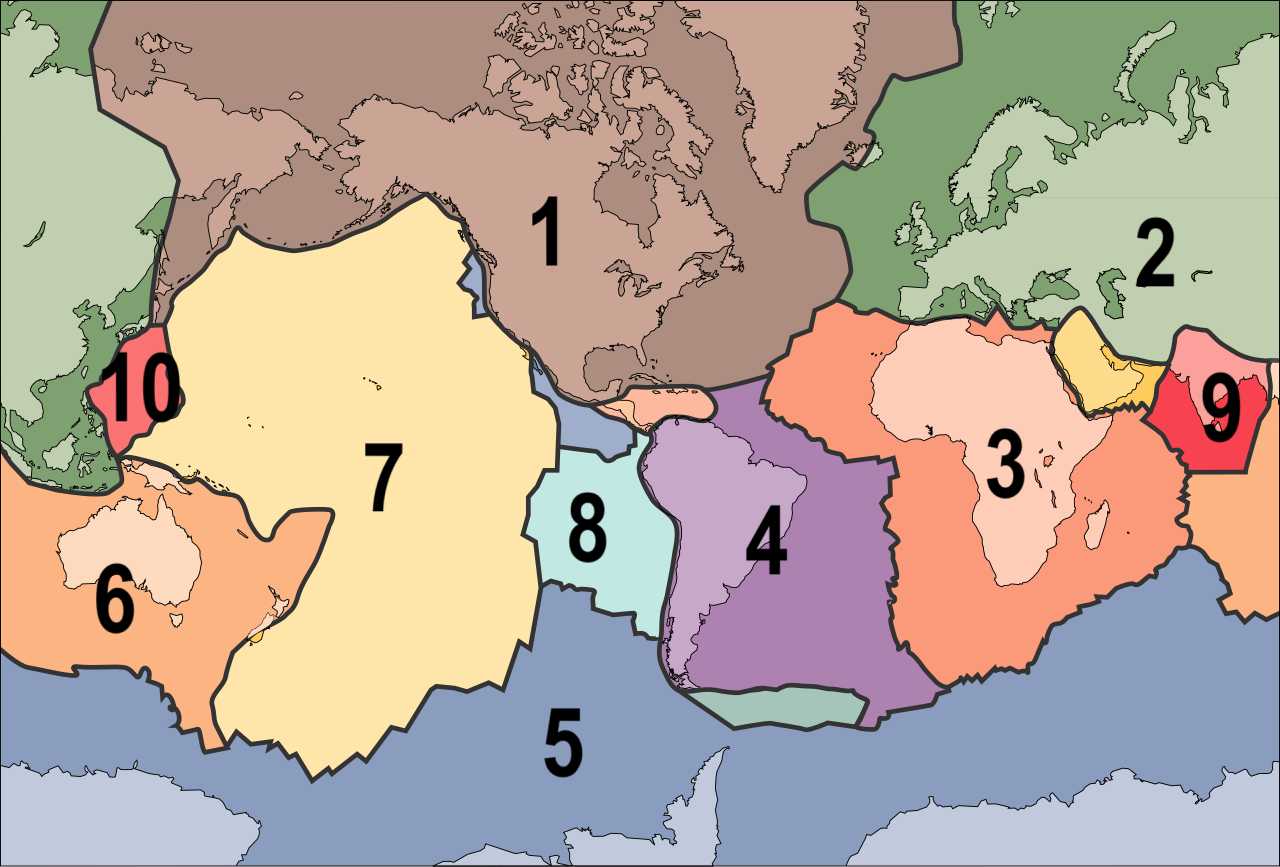
Plates of the World, Unite Trivia Quiz
Tectonic Plates
Can you identify ten of the major tectonic plates whose movement around the Earth's surface is what has determined what that surface looks like?
A label quiz
by looney_tunes.
Estimated time: 3 mins.
